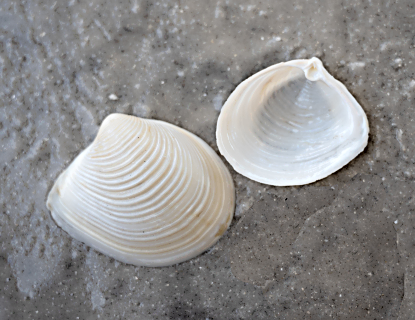
Raeta plicatella
Duck clams can be distinguished from similar sized and shaped clams by the distinctive spoon-shaped pit behind the central hinge teeth. The Channeled Duck Clam pictured here is a little more common than the Smooth Duck Clam. Both have thin shells, but the Channeled Duck Clam has broad concentric ribs and a more rounded shape.
These bivalves use a foot to dig into the sand in 10 to 18 feet of water. Living outside of the surf zone, live clams are not usually found on the beach. Both clam species have two long siphons. One sucks in water filtering out food. The other expels the used water. These siphons are fused to form a single organ that exits the clams flared hind end to extend up to the sea bottom’s surface.
These clams have a ligament that holds the shells slightly open, while the adductor muscles are relaxed. Threatened, the adductor muscles contract closing the shells and protecting the clam.
Live shells should never be taken from any Florida State Park.